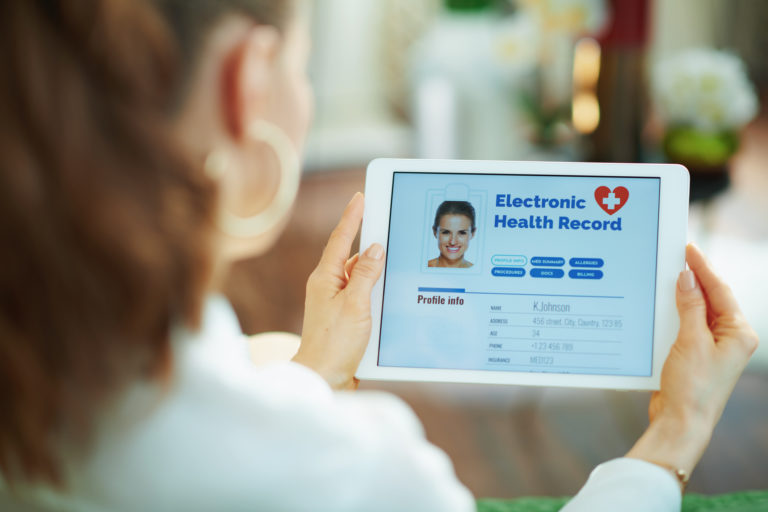5 Ways IT is Impacting Your Clinic Productivity
It’s important to understand anything and everything that is impacting your clinic. This doesn’t just extend to medical trends, but to the actual processes you have in place for managing the back office of your clinic.
It started simply enough: the ability to take credit card payments, then the ability to communicate with patients digitally. Now, though, nearly every part of a clinic is dependent on — or being changed — by technology.Some of these are more important to know about than others, so we’ve pulled together the five that you should be aware of and planning for. After all, we don’t want you spending weeks reading technical journals to learn about IT. We want you to focus on the healthcare part of your practice, not the details of how different technologies work (or don’t, as the case may be).
Telemedicine Increasing Efficiency (and Safety)
One of the biggest trends we’ve seen is telemedicine. Most of you are probably familiar with this, but if you haven’t been exposed to it yet, telemedicine is the practice of administering medical care over the internet.
There are two significant ways in which telemedicine impacts the productivity of clinics. The first is in the efficiency of care. After all, we all know of cases where clinicians are able to make decisions about patient care without having them go to the trouble of visiting the clinic in-person. The second is in the safety of both the patients and staff. Having people come into a practice while contagious can increase the spread of sickness, despite our collective best efforts. Having members of your staff out sick can severely cut down on the productivity of your clinic. Having the separation of miles can help slow that down.
According to a report from ABC, we’ve especially seen this benefit during the ongoing flu season. Quoting a doctor in Texas, ABC reported that, “This flu season, we’ve probably tripled the number of telemedicine cases. It keeps the doctors from being infected. Patients describe their symptoms and we make an assessment.” An online exam, which consists of a digital questionnaire, is also available. A doctor’s response usually takes 10 minutes. A prescription is dispensed to a pharmacy.”
Overcoming Historic Problems
If we were all to start our clinics from scratch, there’s a good chance we’d do something different. After all, your clinic could have been started a decade ago, when many of the technologies we have available to use today were just a twinkle in the eyes of an engineer.
That means we’ve all made decisions about how we’d work based on the assumption that we didn’t have tools that would help us accomplish something faster.
Over time, these processes have become ingrained. We’ve trained people on how to work inside of an environment that no longer exists and that is quite inefficient compared to how productive we can be with modern technological tools.
A great example comes from The New England Journal of Medicine. In their example, they tell us that, “Early 20th-century manufacturers spent nearly two decades figuring out how to realize the productivity benefits of electricity. Initially, factories simply swapped waterwheels and steam engines for large electric motors but retained inefficient belt-and-pulley systems to transmit power from the central power source. Real productivity gains came only after manufacturers realized that many small motors distributed throughout a factory could generate power where and when it was needed; ultimately, it was the reengineering of processes coupled with the new technology that generated explosive growth in U.S. manufacturing productivity.”
This is as true in healthcare as it was during the Industrial Revolution. We take a new technology and apply it to something obvious at first, only to realize that if we fully embrace new technologies, throw out old assumptions, and redesign our clinics from the ground up we’ll be far better off than we can imagine.
Improved Back Office Productivity
One of the more expected changes to clinic productivity comes in the form of more effective and efficient back office work. Whether it’s financial planning, collections, patient management, or something else entirely, it’s been understood for a long time that IT will change how work is done.
Yet, despite our collective understanding that things would change, I don’t think any of us ever expected it to change so dramatically.
Every month brings another story of a clinic or hospital making use of new technologies to change how they manage their offices. One of the more recent examples comes to us courtesy of the Harvard Business Review, in their story about Intermountain Healthcare, a healthcare organization that works in Utah and Idaho. They tell us that after evaluating their focus areas they identified a few different areas that could use an infusion of new technologies and new perspectives on how they work.
In the end, HBR tells us that, “The top executives, the board of trustees, physicians, and nurses all worked together to support the drive to improve care. Today more than 60 services have been revamped, and Intermountain is recognized as a national leader in quality improvement and cost management. None of it would have been possible without its IT systems.”
This example of course makes sense for larger organizations like Intermountain, but the same principles are applicable to smaller clinics with only a handful of practitioners. At the end of the day, we expect that emerging technologies will impact every area of every clinic.
Improving your office’s productivity means embracing the right healthcare technologies. Download our list of 5 healthcare technologies you should embrace.
High Quality Patient Communication
Beyond the management of a clinic or healthcare organization, we see that IT is changing the way that patients and providers interact. Most of us are familiar with the ability to communicate with patients over email, to talk about their care via telemedicine technologies, or to answer their questions without forcing them to sit on hold waiting schedules to line up.
Yes, despite understanding these changes, many of us ignore the real benefit of embracing this quality of communication.
First, better patient communication facilitated by new technologies enables patients to feel more empowered with their healthcare. Having answers at their fingertips from sources they trust has been a profound change. This transparency and empowerment is one of the high points for many patients, according to the University of Illinois at Chicago.
Second, having clear written records of what was communicated and when it was communicated has helped clear up a number of misunderstandings and made sure that patients really understand what treatment they’ll be undergoing.
Finally, the ability to go back in time and see a full record of a patient’s care and communications about that care is beneficial in keeping track of patient’s care over a long time span. It’s not just handwritten notes in a notebook, but months and years worth of information about patients that can be invaluable in working with patients over the long run.

Better Data on Your Practice
The final benefit that we’d like to highlight — although, by no means the final benefit you’ll come across — is the impact that better data can have on your practice. Being able to track everything that’s going on in your clinic can help you make better decisions not just about patient care, but also about how you’re managing your team, administering your resources, and undergoing long-term planning.
Clinic data has always been out there, but only in this new world of technology that automatically keeps track of it has it become useful.






